The imaginary lives of the Queen

She adorns cash and postage stamps, her greatness is hymned at sporting fixtures, and she is a presence in millions of homes every Christmas Day with her TV speech. Her record-breaking reign means that for the majority of those living in the UK today, she’s the only monarch they’ve ever known, but who, really, is Queen Elizabeth II?
More like this:
– Why the Queen is the last Royal icon
– A misunderstood icon of Scottishness
– Dressing the on-screen Royal Family
Many a non-fiction book has set out to provide answers, from ex-Royal governess Marion Crawford’s The Little Princesses, which scandalised the palace upon its publication in 1950, to an ever-rising tower of reverent tomes by royal (and invariably royalist) biographers.
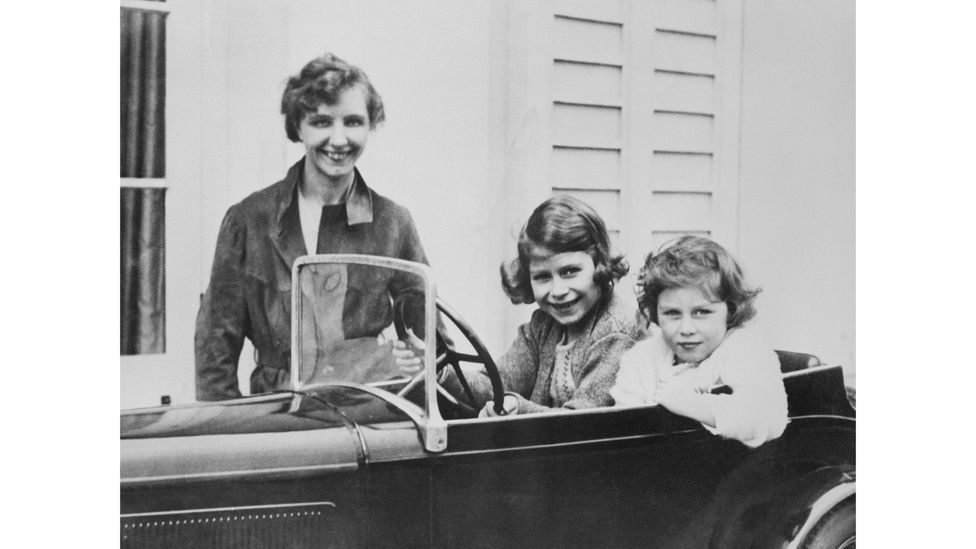
The young Princesses Elizabeth and Margaret with their governess, Marion Crawford, whose book The Little Princesses scandalised the palace (Credit: Getty Images)
Collectively, they dish on details as esoteric as the rules for using the palace swimming pool and the duties of the Yeoman of the Glass and China Pantry. What they tend not to do is shed any substantial light on their subject as a human being. And how could they? The Queen doesn’t grant interviews, her private papers are sealed, and those close to her are selected above all for their discretion.
As society has changed, we’ve been treated to more personal-seeming glimpses, yet even these are highly mediated and jealously guarded. As long ago as 1969, for instance, a documentary titled simply Royal Family was broadcast, depicting a year in the life of the monarch, but despite attracting 30 million viewers across the UK, it’s since aired only once more in full.
To mark this year’s Platinum Jubilee, BBC Studios have made a 75-minute documentary, narrated by the Queen herself and featuring never-before-seen footage from private home movies shot by the Royal Family. Elizabeth: The Unseen Queen includes images of the then Princess Elizabeth showing off an engagement ring before her betrothal to Prince Philip was made public, as a young mother with Prince Charles and Princess Anne, and spending time with her uncle, Prince George the Duke of Kent. Yet of the more than 400 reels of film the BBC was given access to, none postdate her coronation.
And so the puzzle remains. It seems natural that fiction writers should seek to fill the void beneath all that magisterial pomp and minutely choreographed circumstance. Fictionalised depictions of the Queen on the page, stage and screen don’t only strive to convey a fuller portrait of the woman herself, they also show us something of our culture’s evolving feelings towards the institution she’s devoted her life to.
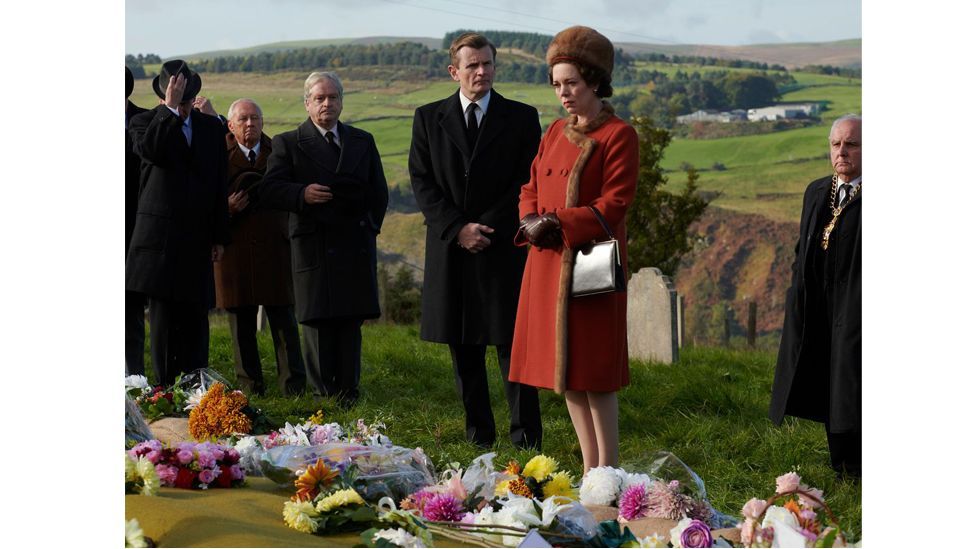
The Crown depicts a fictionalised version of the Queen’s life story – and has been a huge hit for Netflix (Credit: Netflix)
In 1988 Alan Bennett’s A Question of Attribution, about Cambridge spy and royal art advisor Anthony Blunt, premiered at the National Theatre in London. With it, Bennett became – sketch writers aside – the first dramatist to depict a reigning British monarch as a character in a play. Her Majesty the Queen is revealed as possessing a native shrewdness and pointed charm, the intimation being that she knew Blunt had been a Soviet spy. While apparently revealing her as a sophisticated operator, the play simultaneously underscores her inscrutability: there’s no question of her voicing her suspicions directly.
Her Majesty was played by Prunella Scales, and as New York Times critic Frank Rich observed at the time, “The mixture of the regal and the human is so successful that the rapt audience applauds the actress’s mid-scene exit – a rarity in London – as if the actual Queen were leaving the theatre.”
Less than a decade later, reflecting in the London Review of Books on the damage done to the monarchy by the Queen’s response to Princess Diana’s death (she was widely criticised for her seeming indifference), Bennett wrote: “I remember, regretfully now, one of HMQ’s lines in A Question of Attribution which, when we were looking for cuts, we took out: ‘I don’t like it when people clap me because there may come a time when they won’t. Besides I’m there. It’s like clapping Nelson’s column.'”
Bennett is no republican, despite twice turning down honours from the Queen (a CBE in 1988, and a knighthood in 1996). Not so Sue Townsend, who told The Independent newspaper in 1992, “When you hear the word ‘subjects’ and find out what ‘to subject’ yourself means, it diminishes us all.” She was speaking on the publication of The Queen and I, a satirical novel that opens as an antimonarchist People’s Republican Party sweeps to power and boots the royals out of Buckingham Palace. The Queen – now plain Liz Windsor – finds herself exiled to a council estate in the Midlands.
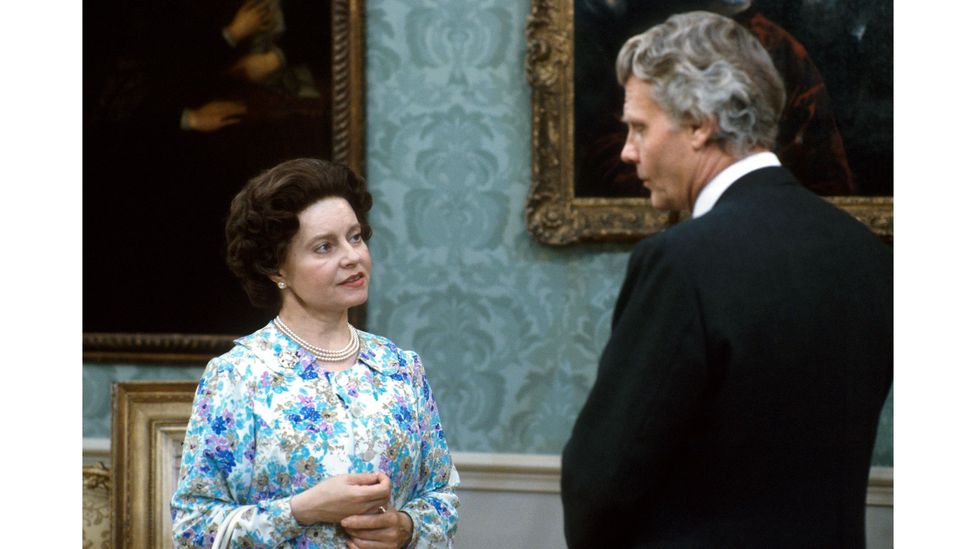
Prunella Scales as the Queen and James Fox as Anthony Blunt starred in the screen version of the Alan Bennett play A Question of Attribution (Credit: BBC)
Life in “Hell Close” takes some adjusting to but adjust she does, after a fashion. Here she is, for instance, grappling with the almighty challenge that is getting herself dressed each morning: “She missed the deft fingers of her dresser fastening her brassiere. How did other women cope with those hooks and eyes? One needed to be a contortionist to bring the two together without assistance”.
It’s noteworthy that even a staunch antimonarchist like Townsend retains a degree of warmth in her mockery. But if such irreverence would have shocked the generation that feted Elizabeth II’s coronation in 1953, it was soon to give way to something still more iconoclastic: pity.
By the time Emma Tennant published her 2009 novel, The Autobiography of the Queen, the palace had weathered not only the fallout from Princess Diana’s death but also parliamentary disquiet over concessions provided to minor royals, the trial of former royal butler Paul Burrell, and assorted embarrassments such as Prince Harry being photographed in Nazi regalia. It’s little wonder the Queen came to be depicted as yearning to escape royalty’s gilded cage. And so, disguising herself as one Gloria Smith, she slips out of Balmoral on a foggy morning and heads to the Caribbean island of St Lucia.
It’s a theme William Kuhn picked up on four years later in Mrs Queen Takes the Train. Feeling her age and oppressed by further tabloid coverage of her family’s woes, Kuhn’s Queen dons a skull-emblazoned hoodie and head for King’s Cross station, intent on making her way to Scotland. If this good-natured yomp fails to conjure up an especially memorable Queen, it does have fun demolishing the little we think we know: one of her favourite pastimes is correcting biographies of herself. For instance, “Lilibet”, her famous nickname, has nothing to do with “Elizabeth”. Instead, we’re told that it derives from the words “little bit”, as in: she could have a little bit of pink-iced cake if she were a good girl. The diminutive “was a tease, really, a pinch, a reminder that it was undignified for a princess to be greedy for cake”.
Inside the royal bubble
The sheer bizarreness of life in the royal bubble, and the extent to which – vast advantages notwithstanding – it also has the potential to leave anyone raised within it at a profound disadvantage in terms of behaving like a fully functioning human being, is nimbly conveyed in The Windsor Knot (2021), the first novel in SJ Bennett’s enjoyable and deeply-researched series in which the aged sovereign becomes an amateur sleuth. “She didn’t know if she felt more sorry for the castle or the man”, the Queen reflects upon learning that a musician hired to perform at a Windsor Castle soiree has been found dead in his bed. “It was much more tragic for the poor young pianist, obviously. But she knew the castle better. Knew it like a second skin. It was awful, awful.”
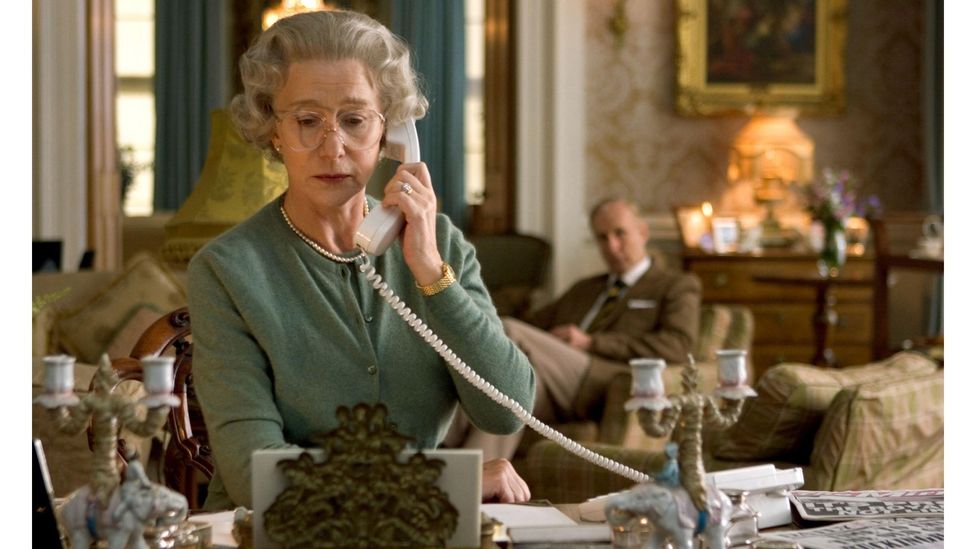
Helen Mirren starred as the monarch in Stephen Frears’ film The Queen, which portrays an imagined aftermath of Princess Diana’s death (Credit: Alamy)
Bennett (no relation to Alan) is an ardent fan of the Queen. Her father met her on numerous occasions and Bennett herself once interviewed for a job as the Queen’s Assistant Private Secretary. It was a scene from television’s The Crown that helped inspire her to cast Her Majesty as the palace’s own Miss Marple. In series two of the drama, there’s a moment when Elizabeth misplaces a soldier on a model battlefield. Bennett was convinced this was something the Queen would never do – she was simply too knowledgeable.
Of course, Bennett isn’t alone in taking exception to The Crown‘s highly dramatised version of history but even so, there is today no better-known fictional depiction of the Queen. Its showrunner is Peter Morgan, who previously wrote the screenplay for Stephen Frears’ film The Queen (2006), in which Helen Mirren vividly portrayed a droll, forthright head of state who retreats into opacity in the wake of Princess Diana’s death. It’s a crisis that nothing in her reign has prepared her for, and she’s forced to face up to the fact that she’s been outranked by her ex-daughter-in-law’s celebrity. She sheds tears, but they’re not for Diana.
That depiction suggests that the Queen’s entire self is dedicated to one project alone: the preservation of the monarchy. It’s a view that’s driven all four seasons of The Crown to date, even though Morgan adds plenty to his catalogue of royal missteps, among the most damning her decision in 1966 to wait eight days before visiting Aberfan, the Welsh village where an avalanche of mining waste collapsed on a primary school and claimed 144 lives, most of them children. When she finally travelled to Aberfan, Morgan’s Queen – played with near-unshakeable stoicism by Olivia Colman – must be told by an aide that tears are required.
This is the Queen as “the Boss”, her authority absolute and her judgement unwavering. In The Crown, to the extent that we see a secret self or a beating heart, they’re almost entirely subservient to that titular diadem – she’ll even put the crown’s future ahead of her only sister’s romantic happiness.
The curious thing about The Crown is that, by necessity, it presents the Queen as being far more central to the running of the country than she is in reality. After all, she may still be emblazoned on banknotes and postage stamps, but both are used less and less in daily life. Yet, as the series moves through Elizabeth II’s reign, decade by decade, she is the prism through which history is filtered. Though it’s far from uncritical of her, the show’s immense success around the world suggests that on some level, there’s comfort to be found in this view of a timeless institution that transcends fad and fashion, one in which duty trumps all else.
But if Morgan’s series presents an overly royal-centric version of recent history, it also shows how the Queen is herself trapped by all that’s come before her. Like every other monarch the country has known, her ultimate job is to ensure that the crown is passed smoothly on to an heir – no mean feat when public opinion, as she’s learnt, can be more lethal than an army mustered by a pretender from a rival bloodline.
In those largely amiable novels where the Queen escapes, she’s invariably brought back to the throne. Even Sue Townsend’s The Queen and I came with a sequel, in which the monarchy is restored. There’s just one noteworthy exception: The Uncommon Reader (2007), a breezy, lightly subversive novella in which Alan Bennett once again cast HMQ as a fictional protagonist.
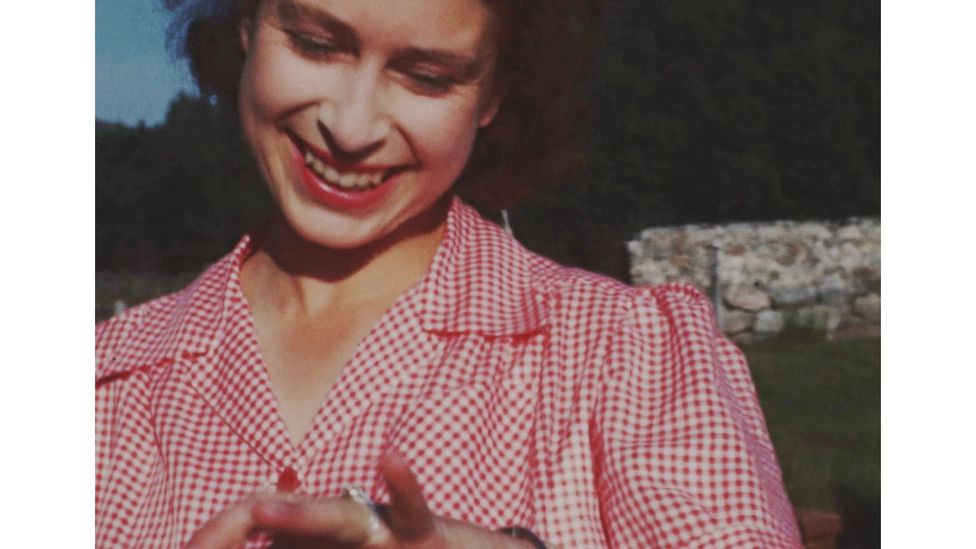
In honour of the Platinum Jubilee, the Queen has granted access to previously unseen footage, offering a rare glimpse into her private world (Credit: Press Association)
It all begins when one of the royal corgis wanders into a mobile library and HMQ feels obliged to take a book out. Once bitten by the reading bug, there’s no stopping her, and she’s soon devouring classics from Proust and Turgenev to Trollope and Hardy. She’s not uncritical but her girlish inquisitiveness and haughty impatience make a pleasing, plausible combination – “Oh, do get on“, she chides Henry James. But best of all, she finally gets to stop being that construct we know as the Queen. As Bennett puts it, “Here in these pages and between these covers she could go unrecognised”. And, when reading leads her to writing, there’s a suggestion that she might at last find the self that readers are forever seeking in all those royal biographies.
As the world’s longest-reigning living monarch simultaneously celebrates her Platinum Jubilee and begins what feels like a gradual retreat from public life, it would be nice to think she might manage something similar. That’s assuming, of course, she hasn’t been leading a double life as a mystery-solving sleuth all along.
If you would like to comment on this story or anything else you have seen on BBC Culture, head over to our Facebook page or message us on Twitter.
And if you liked this story, sign up for the weekly bbc.com features newsletter, called The Essential List. A handpicked selection of stories from BBC Future, Culture, Worklife and Travel, delivered to your inbox every Friday.








